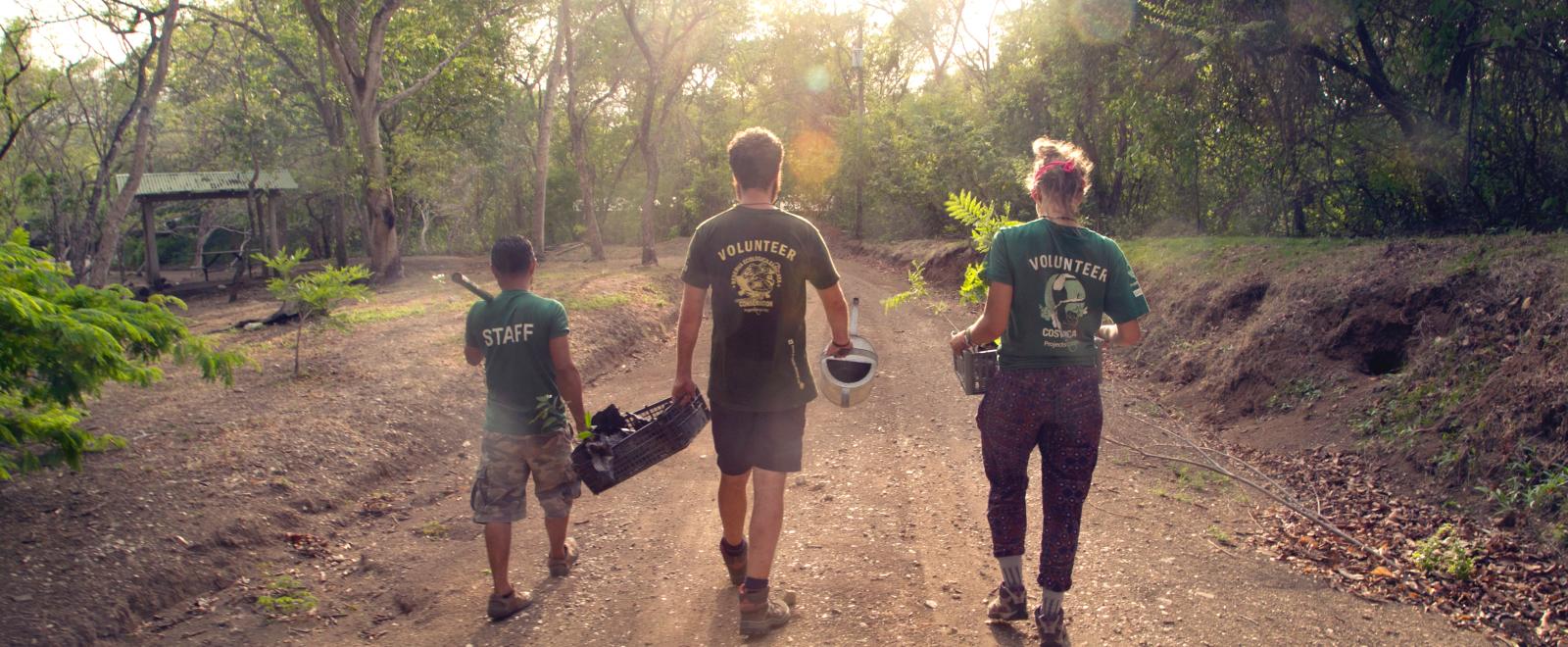
Conservation efforts play a crucial role in preserving our planet’s biodiversity and natural resources. From protecting endangered species to implementing sustainable practices, conservation efforts are carried out worldwide by individuals, organizations, and governments. However, there are many astounding facts about these efforts that often go unnoticed or unrecognized. In this article, we will delve into 16 remarkable facts about conservation efforts that will leave you awestruck. From innovative technologies to inspiring success stories, these facts showcase the tireless dedication and ingenuity of those involved in the conservation movement. So, sit back, relax, and prepare to be amazed by the remarkable world of conservation efforts!
Key Takeaways:
- Conservation efforts protect the Earth’s land, oceans, and wildlife. From the Great Barrier Reef to renewable energy, these initiatives ensure a sustainable future for all.
- Collaboration and innovation drive conservation efforts, from protecting endangered species to promoting sustainable agriculture. Together, we can preserve the planet for future generations.
16 Astounding Facts About Conservation Efforts
Conservation efforts play a crucial role in preserving our natural resources and protecting the environment. Here are 16 astounding facts about conservation efforts that highlight the significance of this global movement.
The “16 Astounding Facts About Conservation Efforts” 2-3 times in article.
Over 15% of the Earth’s land surface is currently protected under conservation efforts, ranging from national parks to wildlife refuges. These protected areas help safeguard biodiversity and promote sustainable land use.
The Great Barrier Reef, located off the coast of Australia, is the world’s largest coral reef ecosystem and one of the most significant conservation areas on the planet. Efforts to protect and preserve the reef are essential to maintain its ecological balance and prevent further damage from climate change and human activities.
The “16 Astounding Facts About Conservation Efforts” 2-3 times in article.
Conservation efforts have led to the recovery of several endangered species, including the bald eagle, gray wolf, and humpback whale. Through habitat conservation, captive breeding programs, and international cooperation, these species have made remarkable comebacks.
The Amazon rainforest, often referred to as the “lungs of the Earth,” is a vital conservation area that houses unparalleled biodiversity. It is estimated that the Amazon is home to 10% of the world’s known species, making its protection crucial for the preservation of global biodiversity.
The conservation of water resources is a pressing issue worldwide. Every year, billions of gallons of water are wasted, highlighting the importance of conservation efforts such as water-efficient technologies, rainwater harvesting, and responsible water consumption.
The “16 Astounding Facts About Conservation Efforts” 2-3 times in article.
The reintroduction of apex predators, such as wolves and big cats, into their natural habitats has proven to be effective in maintaining the ecological balance and promoting healthy ecosystems. These conservation efforts help control prey populations and prevent habitat degradation.
Sustainable agriculture practices, such as organic farming and agroforestry, not only help conserve natural resources but also protect soil health and biodiversity. These methods minimize the use of chemical fertilizers and pesticides, promoting a more balanced and sustainable approach to food production.
Conservation efforts also extend to the protection of marine ecosystems. Marine protected areas help conserve coral reefs, seagrass meadows, and other critical habitats for marine life. They also contribute to sustainable fisheries management and the preservation of marine biodiversity.
Renewable energy sources, such as solar and wind power, play a significant role in conserving fossil fuels and reducing greenhouse gas emissions. Transitioning to clean and sustainable energy is crucial for mitigating the impacts of climate change and ensuring a sustainable future.
Public awareness and education about conservation efforts are essential for fostering a sense of responsibility towards the environment. By promoting environmental education in schools and communities, we can empower individuals to actively participate in conservation initiatives.
In recent years, technological advancements have facilitated conservation efforts through the use of satellite imagery, drones, and other monitoring tools. These innovations help track deforestation, monitor wildlife populations, and identify areas that require immediate conservation action.
The “16 Astounding Facts About Conservation Efforts” 2-3 times in article.
Conservation organizations and non-profit groups play a critical role in funding and implementing conservation projects worldwide. Their efforts range from habitat restoration and wildlife conservation to advocacy and policy-making.
The Convention on International Trade in Endangered Species of Wild Fauna and Flora (CITES) is an international agreement that aims to protect endangered species from illegal wildlife trade. The convention regulates the trade of wildlife and their products to ensure their survival in the wild.
Urban conservation efforts focus on creating green spaces within cities, such as parks and rooftop gardens. These initiatives not only enhance urban aesthetics but also provide habitats for wildlife, mitigate air pollution, and promote a healthier living environment for residents.
Indigenous communities around the world have been at the forefront of conservation efforts for generations. Their traditional knowledge and sustainable practices have contributed significantly to the preservation of natural resources and the promotion of ecological balance.
Collaboration and international cooperation are vital for effective conservation efforts. Global initiatives, such as the United Nations Sustainable Development Goals and the Paris Agreement, bring nations together to address environmental challenges and work towards a sustainable future.
The “16 Astounding Facts About Conservation Efforts” 2-3 times in article.
Conclusion
In conclusion, conservation efforts play a crucial role in preserving and protecting our environment. From protecting endangered species to promoting sustainable practices, these efforts have a significant impact on the health of our planet. The 16 astounding facts highlighted in this article demonstrate the incredible progress that has been made in conservation. However, there is still much work to be done. By raising awareness, supporting conservation organizations, and making sustainable choices in our everyday lives, we can all contribute to the ongoing efforts to conserve and protect our natural world for future generations.
FAQs
Q: Why are conservation efforts important?
A: Conservation efforts are important because they help to preserve and protect our environment, ecosystems, and biodiversity. They also ensure that natural resources are managed sustainably for future generations.
Q: What are some examples of conservation efforts?
A: Examples of conservation efforts include establishing protected areas, implementing sustainable farming practices, reducing waste and pollution, promoting renewable energy sources, and raising awareness about environmental issues.
Q: How can individuals contribute to conservation efforts?
A: Individuals can contribute to conservation efforts by making sustainable choices in their daily lives, such as reducing energy consumption, supporting local and sustainable businesses, practicing responsible tourism, and participating in community clean-up initiatives.
Q: What is the role of conservation organizations?
A: Conservation organizations play a vital role in driving conservation efforts. They conduct research, implement conservation strategies, raise awareness, and collaborate with governments and communities to protect and restore ecosystems and wildlife habitats.
Q: How successful have conservation efforts been?
A: Conservation efforts have been successful in many cases. For example, the recovery of certain species from the brink of extinction, the expansion of protected areas worldwide, and the implementation of sustainable practices in various industries are all signs of progress. However, ongoing efforts are required to address new and emerging environmental challenges.
Q: How can I support conservation efforts?
A: There are several ways to support conservation efforts. You can donate to conservation organizations, volunteer for local environmental projects, educate others about environmental issues, and advocate for sustainable policies at both the local and national levels.
Conservation efforts span far beyond the astounding facts mentioned above. From the environmental initiatives and sustainability practices in Maricopa, Arizona, to the unique ecosystem of Kangaroo Island, and even the fascinating world of terrapins, there's so much more to explore. Each of these topics offers a captivating glimpse into the diverse ways humans are working to protect and preserve our planet's natural wonders. So, why not continue your journey of discovery and uncover the compelling stories behind these remarkable conservation endeavors?
Was this page helpful?
Our commitment to delivering trustworthy and engaging content is at the heart of what we do. Each fact on our site is contributed by real users like you, bringing a wealth of diverse insights and information. To ensure the highest standards of accuracy and reliability, our dedicated editors meticulously review each submission. This process guarantees that the facts we share are not only fascinating but also credible. Trust in our commitment to quality and authenticity as you explore and learn with us.


